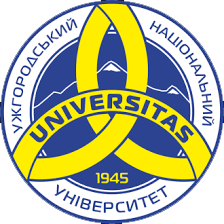THE IMAGE OF A MORAL HERO OF YOUNG PEOPLE: PSYCHOLINGUISTIC ANALYSIS
DOI:
https://doi.org/10.32782/psy-visnyk/2022.1.1Keywords:
image, moral, moral consciousness, moral development, moral ideal, projection.Abstract
The article provides analysis of moral hero’s image, which today’s young people have. We selected characterizing features which presented this image in the consciousness of today’s young men and women. The article conducts the theoretical analysis of the approaches to determination of the categories “moral”, “moral consciousness”, “moral person”, “moral norm” etc. The survey of young people has been conducted about the personal Moral Hero’s characteristics in their interpretation, the main types of Moral Hero and set of personal features, which provide an opportunity to evaluate this Hero as high ethical person have been selected based on the theoretical analysis. In the survey it has been established that Moral Heroes of today’s young people are only several types. There are relatives and celebrities. It’s significant that today’s young people don’t select as Moral Hero religious figures. Their moral ideal is celebrity such as actors, politics, scientists and fictional characters in literature and cinema. Young people don’t have typical Moral Hero, he is individual for everyone but there is tendency to focus on actors and singers. Politics are less represented. The results show Institutes of family and religion have lost their influence on formation of young people’s personalities. This role belongs to the social imagines through projection and identification. In general, young people like power, courage, volitional qualities, but in the real life they select feminine characteristics: tolerance, empathy, friendliness as positive moral characteristics. It’s a proof of immature moral consciousness, when young people evaluate a moral ideal unrealistically. The qualities of celebrities are greatly exaggerated, and young people evaluate a moral ideal unrealistically. We also researched young people perceptions about personal and social level of moral development. It’s been discovered that young people appreciated the level of moral development of social and themselves.
References
Безклубенко С. Відеологія: основи теорії екранних мистецтв. Київ. 2004. 328 с.
Білозерська С., Мащак С. Психологічна готовність молоді до засвоєння морально-духовних цінностей. Гірська школа українських Карпат. № 8-9. 2013. С. 149-153.
Говорун А. Про формування моральної звички в українській педагогічній думці. Історія педагогічної думки. № 2. 2009. С. 13-18. 4. Дейнегіна Т.О. Телебачення як особливий чинник впливу на духовно-моральний світ сучасної молоді. Духовність особистості: методологія, теорія і практика. Вип 5 (52). 2012. С. 71-79.
Крахмалева Е.Г. Морально-нравственный идеал в истории культуры. Духовність особистості: методологія, теорія і практика. Вип 2(43). 2011. С. 60-72.
Моїсеєва І.В. Компонентно-критеріальна структура моральної стійкості підлітків. Міжнародний науковий форму: соціологія, психологія, педагогічка, менеджмент. Вип. 9. 2012. С. 71-78.
Молчанова О.М. Психологічні особливості моральної саморегуляції в юнацькому віці. Міжнародний науковий форму: соціологія, психологія, педагогічка, менеджмент. Вип. 10. 2012. С. 134-143.
Павелків Р. Структура, зміст і детермінанти морального розвитку особистості: ретроспекція і перспективи. Інноватика у вихованні. Вип. 1. 2015. С. 24-38.
Чумак А.Л. «Природна моральність» як форма гуманістичної нормативної регуляції поведінки. Гуманітарний часопис. № 4. 2015. С. 86-91.
Яновська М.Г. Эмоционально-ценностные технологии нравственного воспитания. Киров: ВГПУ. 1998. 93 с.
Яремак А.І. Антропоцентричні основи взаємозв’язку естетичного і морального ідеалів у світоглядних орієнтаціях українських мислителів останньої чверті ХІХ-початку ХХ ст. Гілея: науковий вісник. 2013. Вип. 72. С. 696-701.







